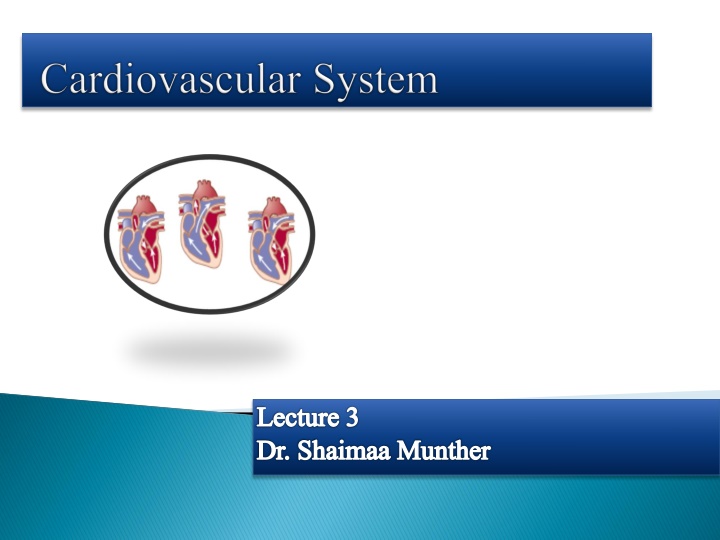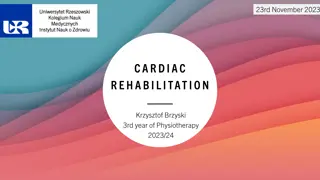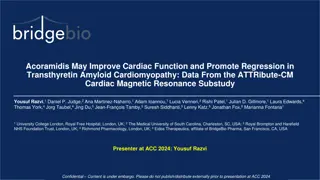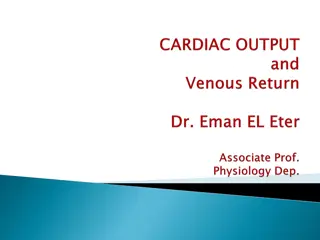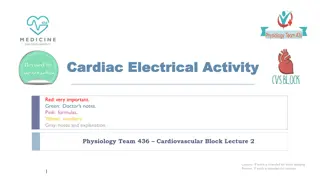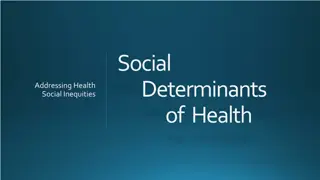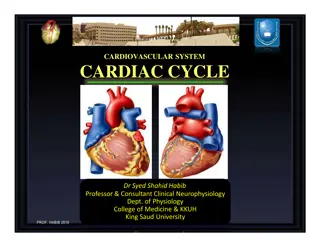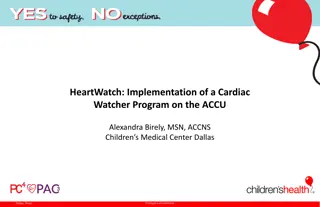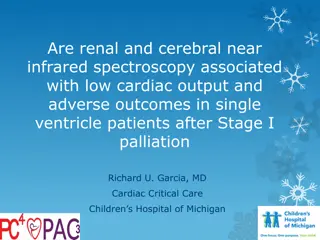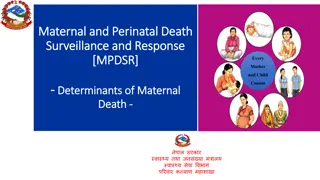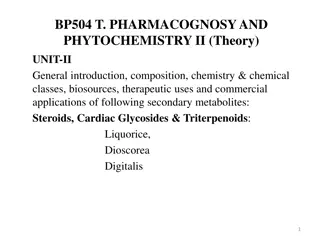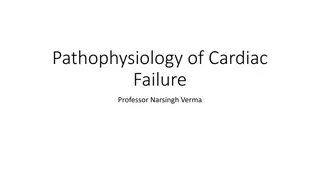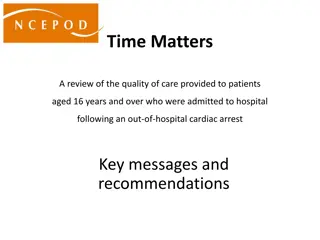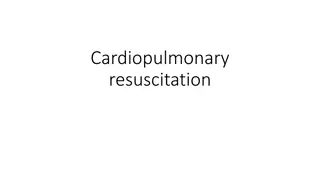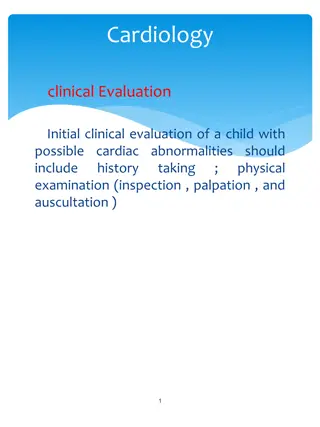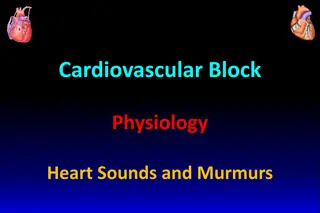Cardiac Output and Its Determinants
Cardiac output is the volume of blood pumped per minute by each ventricle, influenced by factors like heart rate, stroke volume, preload, and afterload. This comprehensive guide explores how these factors interact to regulate cardiac output, along with conditions that increase or decrease it. Additionally, it delves into venous return, Frank-Starling law, and controls on end-diastolic volume, stroke volume, and cardiac output.
Download Presentation

Please find below an Image/Link to download the presentation.
The content on the website is provided AS IS for your information and personal use only. It may not be sold, licensed, or shared on other websites without obtaining consent from the author.If you encounter any issues during the download, it is possible that the publisher has removed the file from their server.
You are allowed to download the files provided on this website for personal or commercial use, subject to the condition that they are used lawfully. All files are the property of their respective owners.
The content on the website is provided AS IS for your information and personal use only. It may not be sold, licensed, or shared on other websites without obtaining consent from the author.
E N D
Presentation Transcript
Lecture 3 Dr. Shaimaa Munther
Define cardiac output. Describe how heart rate and stroke volume interact to control cardiac output. State the influence of preload and afterload on cardiac output.
The amount of blood pumped/minute by each ventricle, expressed in liters/minute. Normally, it is about 5 liters per minute. Determined through multiplying the heart rate (HR) by the stroke volume (SV). CO = HR X SV
Determinants of Cardiac output Stroke volume SV Hear rate HR CO = CO = SV X HR SV X HR
Cardiac Output (CO) volume of blood pumped by each ventricle per minute. Average value: 5 liters/minute = Total blood volume 5 Liters. Cardiac output increases in the following conditions: Cardiac output decreases in the following conditions: 1- Physical exercise (up to 700%). 2-Anxiety and excitement (up to 100%). 3-After meals (30%). 4- High environmental temperature. 5- Pregnancy. 1- Standing from supine position (30%). 2- Rapid cardiac arrhythmias.
Venous return (preload). Afterload. Heart rate (HR) Myocardial contractility.
It is the amount of the blood flowing into the heart via the veins (right or left atrium) each minute (preload). VR and CO are equal (per minute). CO = VR
Controls EDV & thus SV & CO Dependent on: Blood volume & venous pressure. Vasoconstriction (Sympathetic). Skeletal muscle pumps. Pressure drop during inhalation.
Frank-Starling law; the heart pumps automatically whatever amount of blood flows into the right atrium from the veins. heart rate; (stretching of the heart), Stretch of the SA node in the wall of the right atrium has a direct effect on the rhythmicity of the SA node itself to increase heart rate 10 15%. Bainbridge reflex; vasomotor center sympathetic nerves SA node increases of heart rate. (stretch of right atrium)
It is the resistance that oppose cardiac output, e.g., increased arterial systolic pressure. increased afterload reduce cardiac output. reduced afterload (reduced total peripheral resistance) causes high cardiac output. will
Effect of changes in heart rate & stroke volume on cardiac output CO = CO = SV X HR SV X HR In resting state = constant VR In resting state = constant VR During muscular exercise = BOTH HR and SV increase
In resting state, (the venous return is constant), changes in heart rate between 100-200 beats/min., not affect CO markedly. High heart rate (more than 200 beats/minute) may affect CO to be insufficient (duration of ventricular diastole). Slow heart rate may also reduce CO (complete heart block disease (HR < 40 beats/minute)). In exercise, (the venous return is increased), cardiac output is increased by increasing in both heart rate and stroke volume.
Effect of changes in heart rate on cardiac output Effect of changing HR ALONE e.g. arrhythmias or artificial pacemaker HR SV Cardiac output HR SV HR SV 70 140 Heart Rate
Effect of changes in heart rate on cardiac output During muscular exercise During muscular exercise BOTH BOTH HR and SV increase HR and SV increase Therefore Therefore CO is directly proportional to HR
defined as the strength of contraction at any given EDV. It is measured by Ejection Fraction (EF%). Myocardial contractility affected by: The preload (i.e., EDV): Frank-Starling's law. The afterload (i.e., aortic impedance): An increase in the afterload reduces the cardiac pumping power, and vice versa. Sympathetic nerve supply. Ventricular hypertrophy; (athletes) can increase the cardiac pumping power up to about 35 litres/ minute.
